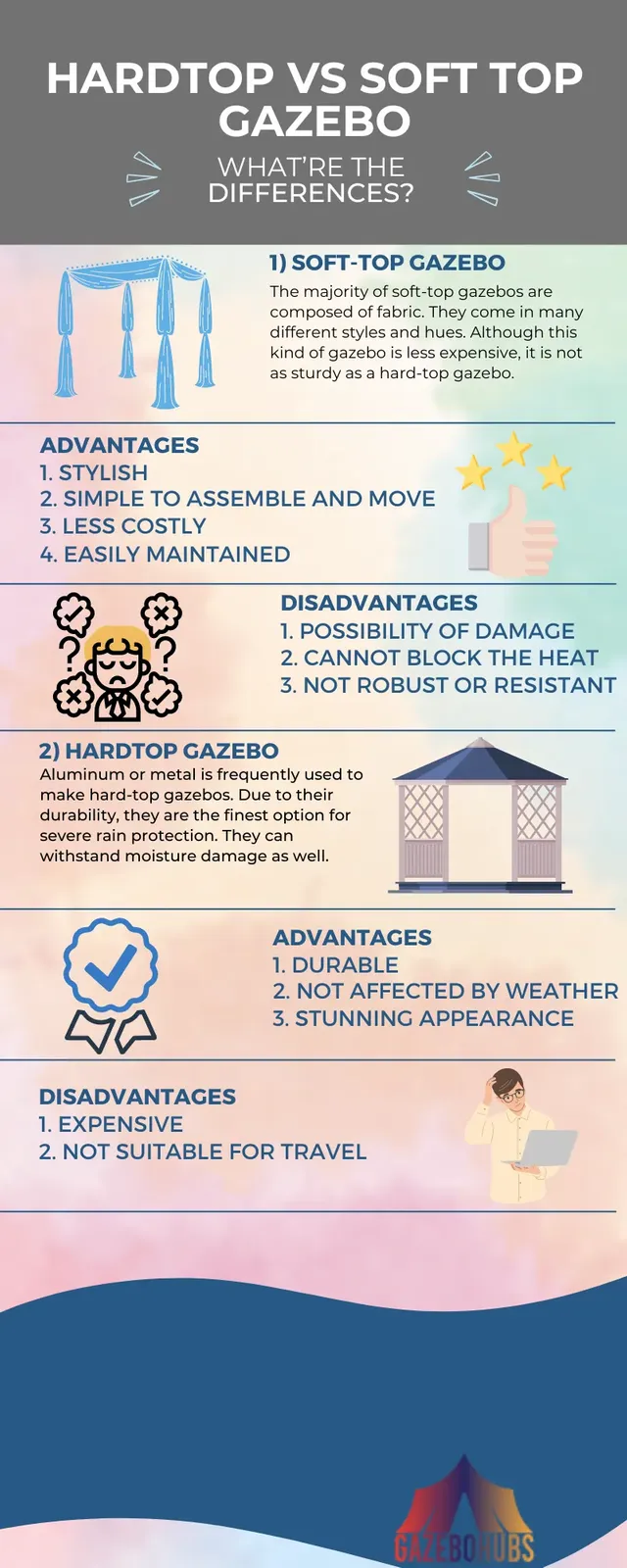Which Is Better For High Wind Conditions: Hardtop or Softtop Gazebos
When it comes to enjoying the outdoors, gazebos provide a comfortable and stylish space to relax, entertain, and seek shelter from the elements. However, if you live in an area prone to high wind conditions, it's essential to choose a gazebo that can withstand such challenging weather. Two popular options are hardtop and softtop gazebos, each with its advantages and disadvantages in high wind conditions. In this article, we will explore the characteristics of both types to help you determine which is better suited for your needs.

Credit: Gazebohubs.com
Hardtop Gazebos:
Hardtop gazebos, as the name suggests, have a solid, sturdy roof made of durable materials such as metal or polycarbonate. Here are some key points to consider:
a. Stability: Hardtop gazebos are generally more stable in high winds due to their solid construction. The heavy-duty materials used in their design provide a strong foundation that can withstand gusty conditions without significant damage or risk of collapse.
b. Durability:
The robust nature of hardtop gazebos makes them highly durable. They are less prone to wear and tear caused by wind, rain, or sun exposure. The solid roof also provides better protection against falling branches, debris, or heavy rainfall.
c. Maintenance:
Hardtop gazebos often require less maintenance compared to softtop gazebos. The solid roof does not accumulate water, which reduces the risk of mold or rot. Additionally, the sturdy materials used in their construction are typically resistant to fading, warping, or cracking.
d. Weight:
Hardtop gazebos are generally heavier than their softtop counterparts. This weight contributes to their stability, making them less likely to be lifted or blown away during high winds. However, it can also make them more challenging to move or transport.
Softtop Gazebos:
Softtop gazebos feature a fabric or canopy roof that is usually made of polyester or a similar material. Here are some factors to consider when evaluating softtop gazebos for high wind conditions:
a. Flexibility: Softtop gazebos have a more flexible roof that can sway with the wind, reducing the risk of structural damage. The fabric material allows the wind to pass through, minimizing the impact on the gazebo's stability.
b. Portability:
Softtop gazebos are generally lighter and more portable than hardtop gazebos. If you live in an area prone to high winds but only occasionally experience such conditions, a softtop gazebo can be a convenient option. You can easily take it down and store it when strong winds are forecasted.
c. Maintenance:
Softtop gazebos may require more maintenance than hardtop gazebos. The fabric roof is susceptible to tearing or fading over time due to prolonged exposure to wind, rain, and sunlight. Regular cleaning and maintenance can help prolong their lifespan and keep them in good condition.
d. Stability:
While softtop gazebos can handle moderate wind conditions, they are generally less stable compared to hardtop gazebos in high wind areas. The flexible roof design that allows wind to pass through can also make them more susceptible to damage, especially during severe storms or hurricanes.
Conclusion
In conclusion, both hardtop and softtop gazebos have their pros and cons in high wind conditions. Hardtop gazebos provide superior stability, durability, and minimal maintenance, making them an excellent choice for areas with frequent high winds. Softtop gazebos, on the other hand, are more flexible and portable, making them suitable for occasional windy conditions.